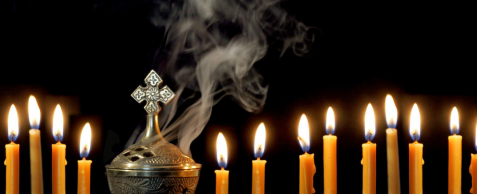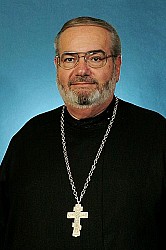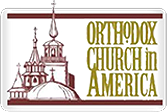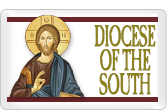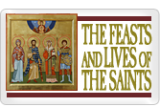ORTHODOX CHURCH ETIQUETTE
The Holy Orthodox Church is perhaps one of the last social institutions where dignity, protocol, respect, and reverence are maintained. This is primarily because when we come to the Temple (the name for the worship space in an Orthodox Church building) and its services we are entering the Kingdom of God on earth, and we choose to honor this sacred place by our attentiveness to what is proper and ordered. We have the opportunity to reflect the image of Christ within us by our actions. “You are a chosen generation, a royal priesthood, a holy nation” (1 Peter 2:9).
This guide is meant for personal reflection and not as a means of judging others. Keep in mind that there are different traditions even among the Orthodox faithful. We come to church to pray and worship God above all else, and that should be our only focus. While the following reference the Divine Liturgy, proper etiquette should be applied to all of the Divine Services of the Church.
Preparation is important to a joyful and spiritually rewarding participation in Divine Liturgy.
Every evening before the next day’s Divine Liturgy, Great Vespers is celebrated in the Temple. This is an evening prayer services which helps to orient our minds and hearts to that which we will be doing the next morning. It contains many prayers that direct our hearts to the feast or saint that we will be commemorating at the Divine Liturgy. It helps us to think about the wonderful and awesome mystery that we will be participating in, especially if we intend to receive Holy Communion the next morning.
We continue our preparation for Holy Communion by fasting from all food and drink from the night before. If a physical condition prevents such, then we fast as best we can within our physical limitations. Also we examine our conscience to be sure it is free from serious sin. If it is not, than we must not receive the Body and Blood of Christ until we have received absolution through the Mystery of Confession.
Our preparation for attendance at Divine Liturgy continues the next morning.
We rise with sufficient time to arrive at the Temple on time, which is before the Divine Liturgy starts. Likewise selecting what to wear to the Temple is a necessary part of preparation.
Church Clothing
Whenever we are preparing to come to church, we should remember that we will be entering the House of God. This requires that we dress modestly and with reverence. Generally, this will mean that we want to wear our best clothing. What could be a more important meeting than that with God Himself? Divine Services are not fashion shows, the purpose in choosing our clothing wisely is that we model what is important to us by how we dress.
In our modern terminology, “business casual” may be thought of as the minimum of proper dress in the Temple.
Toddlers, four year of age and under, may wear nice shorts if the parents desire. It is not appropriate for anyone else to wear shorts into the Temple for any reason.
St. Paul wrote that women should not wear men’s clothing. Trousers have now become acceptable attire for both men and women. However, pants that are too casual or too tight are never appropriate for either gender.
Short or tight-fitting skirts, transparent garments, garments with low necklines, or strapless tops are likewise not appropriate. Sleeves that cover the shoulders are the minimum for both men and women. T-shirts are not appropriate for wear in the Temple.
Although men are not required to wear a suit and tie, they will want to make an effort to dress as if they were going to an important event. Clothing with logos or printed material distracts others from praying.
Some women have the pious tradition of covering their heads. This custom should not be criticized nor should not wearing such covering. Men and boys must remove their hats when entering the church building.
You are the Light of the World.
Lighting candles is an important tradition in Orthodox worship and should be practiced by all. We light them as we offer prayers to God. We are reminded that Christ is the light of the world and that we are called to be light in the darkness. Typically, candles are lighted when entering the church, as we stand and pray before the holy icons. It is customary and responsible to make a financial offering to Christ and his Church when lighting the candles, and to help with the purchase of new candles.
There are times when it is inappropriate to light our candles in order not to disturb the service. It is not proper to light candles during the reading of the Epistle and Gospel, the Little and Great Entrances, the homily or the Anaphora (prayers of consecration of the Holy Mysteries).
If one has arrived so late that candle lighting would be after the first litany it is best to wait until the end of Liturgy to light your candles. When visiting the church when no service is being celebrated, candles are often lighted when offering private prayers
Candles should be allowed to burn down without being extinguished early, since the burning candle symbolizes our prayers rising to heaven and the light of Christ in our midst. Please teach your children how and why we light candles while being mindful not to let them light candles alone for safety reasons.
Entering the church
“It is time for the Lord to act.” This liturgical phrase signals our transition from the temporal into the eternal. Leaving the world outside, we abandon worldly time and enter into God’s time. Being creatures that live in this world, we are bound by chronology; the cycles of time and the clock serve as guides for daily life. As Orthodox Christians, we anticipate being lifted “out of time” to be ushered into the heavenly dimension.
The Lord’s Day worship begins on Saturday evening with Great Vespers and includes Sunday morning Divine Liturgy. Although timeless, practically speaking, worship services have a specific point in time when they are scheduled to begin. Therefore, the proper time to arrive at church is well before the service is scheduled to begin, in order to pray and complete our preparations for worship. As is our custom always enter prayerfully and, when the time is proper, light candles and venerate the holy icons. We come to the church on time as if to a “Great Banquet,” with reverence because we are partaking of the very Body and Blood of Christ, our Savior. Coming to pray the Hours before the Divine Liturgy begins, will ensure that you will be settled in with plenty of time to pray without distraction
In the event that arriving late is completely unavoidable, try to enter quietly and unobtrusively, observing what is happening. Remain in the Narthex if the Epistle or Gospel is being read, the priest is praying an ectenia (litany prayer), during the Little and Great Entrances, or during the homily. Never enter during the Anaphora (the prayers of consecration of the holy Mysteries).
May God bless our worship as the eternal breaks in upon the temporal
Standing in Church
It is the custom and tradition of Orthodox Christians to stand throughout all services. In “Orthodox countries” there are usually no pews in the churches. Benches and chairs are along the walls for the elderly and those who need to sit for personal reasons. If you need to sit for health reasons during the Divine Liturgy, remember to stand at these times: when the Liturgy begins and the priest gives the blessing; during the Little and Great Entrances; when the priest is censing the icons and the faithful; during the Gospel reading; at the Anaphora; when Holy Communion is being distribute (whether or not you are receiving; and at the final Blessing.
Venerating Icons
The Orthodox Church teaches that it is proper to venerate (not worship) the holy icons as pronounced by the Seventh Ecumenical Council in 787 A.D. The acceptable way to do this is to kiss either the hands or feet of Our Lord or of the saint depicted in the icon, or the scroll, the Gospel book, or the hand cross a saint is holding, never kiss an icon or hand cross on the face. Please do not wear lipstick when kissing the icons.
Blessing oneself
It is appropriate to cross or bless oneself at the mention of the Holy Trinity—Father, Son, and Holy Spirit; whenever entering or leaving the Temple; when passing in front of the altar; when venerating an icon, the Gospel, or the cross; and at times for personal petitions. Crossing oneself is not done when the priest is giving a blessing or censing the congregation. Instead, one should bow the head to receive the blessing. It is not the practice to ‘follow the priest’ as he incenses the temple, rather remain facing forward.
Bowing
Orthodox Christians bow to the priest at his blessing, and when he asks forgiveness before the Great Entrance and again before Holy Communion. It is traditional for the Orthodox faithful to bow and cross themselves when they enter and leave the church, and when they pray before the icons.
Refrain from socializing during services
Save your greetings and conversations for the social hall during the time reserved for fellowship. We come to the Temple to greet God with our prayers and to worship Him. It is not appropriate to greet people with more than a smile or to have a conversation with them during the services. Besides being disrespectful towards God, it is rude towards the other people in the Temple who are trying to worship. Talk to God while in the Temple through your prayers, hymns, and thanksgiving-and your friends in the fellowship hall afterwards.
Use of any electronic devices is never appropriate in the Temple
Unless you need to keep your phone on for an emergency, “Lay Aside all Earthy Cares”, as is sung during the Cherubic Hymn. Do yourself and others the favor of turning off your phone before entering the Temple to allow for your time worshiping to be as undistracted as possible. If you must keep it on please turn it to vibrate.
Lipstick, Perfume and Chewing Gum
As stated elsewhere, do not wear lipstick while taking Holy Communion, or when kissing the cross, an icon, the priest’s or bishop’s hand, or any sacred object. It is best not to wear it at all in the church building. Lipstick looks terrible smeared on icons, crosses, the communion spoon, and the priest’s or bishop’s hand. Hand-written icons have been ruined by lipstick; and even though the cross or spoon can usually be cleaned after everyone venerates, it’s not very considerate to those who follow. What is the answer? If one insists on wearing lipstick to church, please blot your lips well before venerating and do not approach the chalice to receive Holy Communion while wearing lipstick.
Some people are very sensitive to perfume, cologne and even aftershave. If used, please use only a small amount. The Temple is already filled with the wonderful odor of incense arising to God as our prayers do.
Chewing gum is never appropriate in the Temple.
Leg crossing
In many cultures throughout the world, crossing one's legs is taboo and considered very disrespectful. In North America there are no real taboos against such action, rather, we tend to cross our legs to get comfortable. Should we do so in the Temple? No. Not because it is “wrong” for us ever to cross our legs, but because it is too casual—and too relaxed—for being in the presence of God. When we get settled in our favorite chair at home, we lean back, kick up our legs, and allow our minds to wander. Remember, sitting in the Temple is a concession, not the norm of prayer. We should remain attentive (i.e.: “Let us be attentive”) at all times as a soldier prepared for (spiritual) battle before his commander. Should we sit, we must do so attentively and not too comfortably that our minds not wander off the “one thing necessary.” Also, please be aware that people from some cultures are offended by the crossing of legs or by arms held behind the back. Keeping your feet on the ground also enables you to remain attentive and to stand when necessary. Hands in pockets should also be avoided.
In and Out
Certainly parents should have ready access to the doors to take small children out of the nave and even outside if necessary if they are distracting or need a short break—for this reason the exit door must be accessible, i.e. let us avoid the temptation to congregate around the back doors, and challenge ourselves to move forward into the nave.
It should go without saying that adults and teens should be able to hold their place for the entire time, without moving around or going in and out of the nave during the various services.
The sermon or homily is not an intermission. It is not appropriate to go out or to come in during them or to try to slip out quickly before they begin or at their conclusion.
Receiving the Antidoron (Blessed Bread)
When receiving zapivka after Holy Communion or the antidoron (literally translated, “instead of the gifts”) after venerating the cross at the end of Divine Liturgy, be mindful not to allow the crumbs to drop, since this is blessed bread. Children will need assistance so that they do not take too many pieces, and so they are not careless in handling the bread.
While sharing a piece of antidoron with a visitor is acceptable, it may not be appropriate to do so after zapivka, since such can be confusing to a non-Orthodox visitor who might construe such as being considered communion.
Leaving Church
The respectful protocol is to leave the church only after the final blessing, and after venerating the cross held by the priest at the end of the Divine Liturgy or other service. If you need to leave early, please exit the church quietly and refrain from conversing until after you have exited so as not to disrupt others. It is not acceptable to be in the kitchen, or social hall at any time during Liturgy. Those who leave early deprive themselves of a blessing. As one leaves the Temple it is proper to turn, face the iconostas and bless yourself. After exiting the church building, it is customary to face the doors of the church, bow, and bless yourself before walking away.
Greeting the Priest and Bishop
In our modern culture, we greet one another with a handshake. The exception to this is when we greet a member of the clergy. We do not shake a bishop’s or priest’s hand; we kiss it with reverence and ask for a blessing. The proper way to do this is to approach the hierarch or priest with right hand over left, palms facing up, and then bow while saying, “Master, bless” to the bishop, or “Father, bless” to the priest. If either places his hand in yours while blessing you, this is an appropriate time to kiss his hand. We kiss his hand because we are honoring Christ, whom he represents and receiving His blessing.
When a priest or bishop at any time says to you: “God bless you” the proper response is “Thank you”. It is not customary to return the blessing.
Children in Church
Christ said, “Let the little children come to Me, and do not forbid them; for such is the kingdom of heaven” (Matthew 9:14). As members of the parish family we must remember that the children are our future. Make them and their parents welcome. Assist the parents with them if necessary and thank God for His generous gift in sending them to us.
It is possible for young children to remain in church throughout a service if they are taught to be quiet and respectful. If your child becomes fussy or out of control, then remove them from the nave of the church quickly until they calm down.
It is never appropriate to allow a child to run in church, to roam about during the services, play loudly, or carry toys that make noise. Eventually, children will be able to spend longer times in the Liturgy. That is where they should be, but remember the reason for coming to church is to pray and worship.
Plan to have your children use the restroom and get a drink before church begins, (good advice for all of us) and don’t allow them to come and go continually. Parents often bring little snacks for young children to keep them occupied and quiet in church. This is fine as long as it is discreet and quiet and the parent sees to cleaning up any leftovers. Never allow a child to have anything in his or her mouth when coming to Holy Communion. By the time a child is 3-4 years old this will most likely be unnecessary. And by the time a child reaches age 7 they are mostly capable of fasting the entire morning of Holy Communion (or at least cutting back on breakfast).
Consider bringing your children into the church at a time when the Liturgy is finished to “practice” church behavior. Teach them that they are visiting God’s very special house, and they will need to have very special manners there.
Receiving Holy Communion
If properly prepared to receive the Holy Mysteries, by prayer, fasting and being free from serious sin, reverently approach the chalice with arms crossed on your chest. When making the sign of the cross, do not be too close to the chalice; big arm movements can have disastrous results. When you are ready to receive the Holy Mysteries, clearly tell the priest your Christian name if he does not know you. Make sure that your head is over the red communion cloth. Tilt your head back and open your mouth widely. It is permissible to close your mouth as the spoon is withdrawn. (In some churches it is customary to carefully kiss the base of the chalice after receiving the Holy Gifts. Wait for the servers holding the Communion cloth to wipe your lips) Carefully step back from the chalice. Go to the zapivka table for some bread and wine to clear your mouth from any remaining Holy Communion. Then return to your place, offer your personal prayers of thanksgiving and remain standing. Be a good example and instruct your children.
Following the above simple customs and traditions for conduct in the Holy Temple will make our attendance at Divine Liturgy an even more joyful and worshipful experience.
Our American culture of the 21st Century is rather casual, even subtly anarchist, in its approach to life. Dress, music, language, values, morals, and entertainment all reflect a trend to “downgrade” life from what God intended it to be. We mustn’t allow this prevailing tendency to enter into our Christian piety, whether at home or at church. Having, fostering, and recognizing Christian piety, should not be seen as a “bad thing.” Most church etiquette is based on simple common sense and a respect for God and others. We are in church to worship God in the Holy Trinity. The priest announces, “In the fear of God, with faith and love, draw near.” If we approach our lives and our worship together with this in mind, then we will be people of proper church etiquette.

